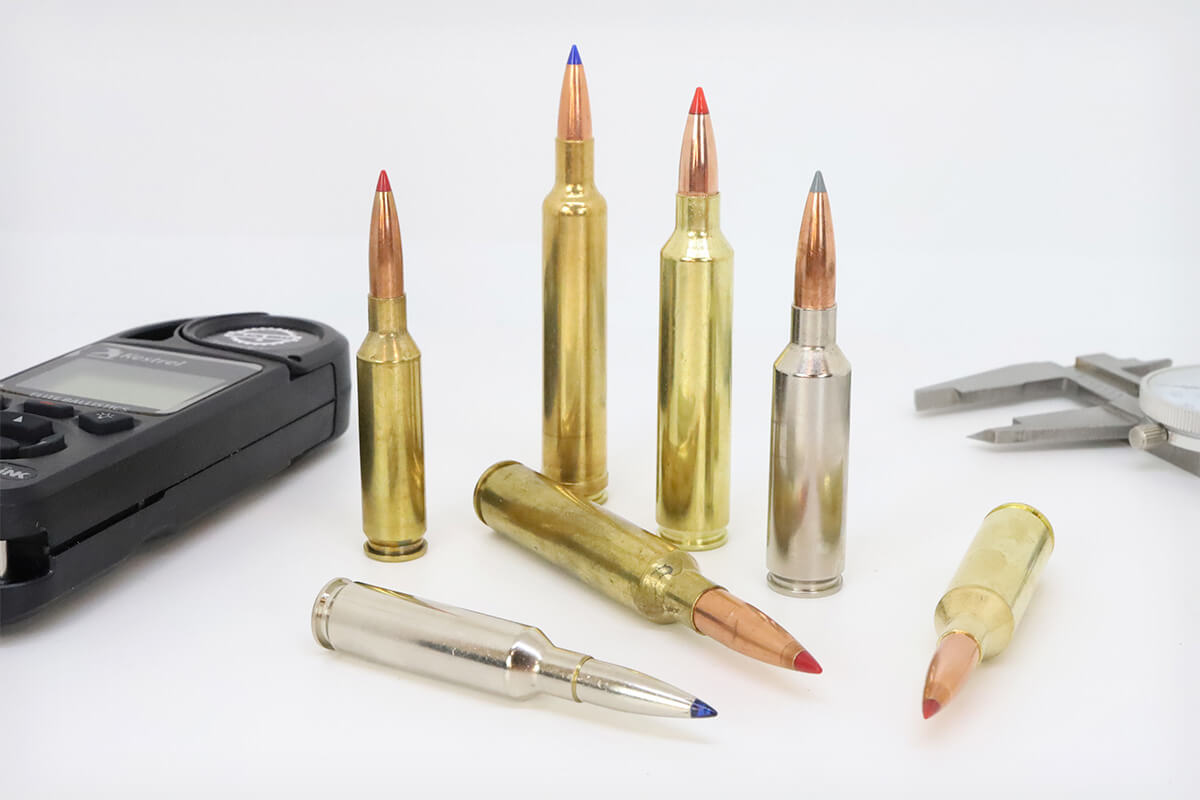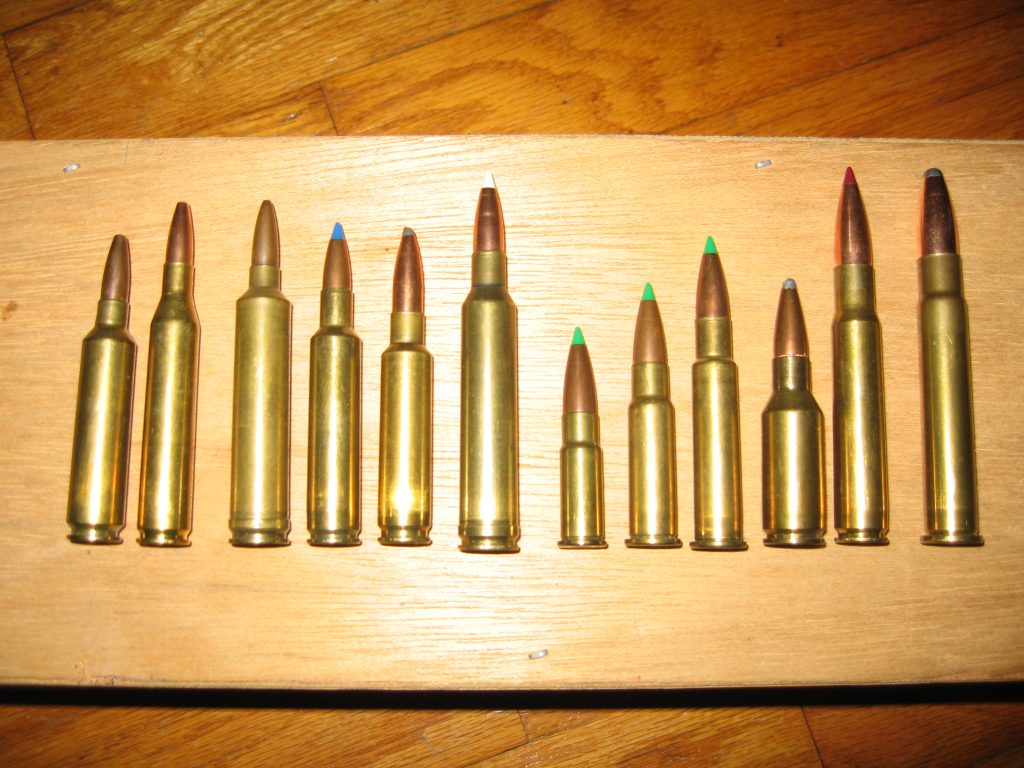There are so many different types of cartridges available for rifles, pistols and shotguns that the choice becomes not so obvious. What is the difference between all-metal cartridges and expansive ones? Do you need a shotgun pellet or bullet?
In this article, we will introduce and explain the main characteristics of the most common types of ammunition for small arms. Please note that terms, measurements and color codes are not always consistent between all manufacturers; the standards you’ll see here are the most common, but there are others.
Anatomy of cartridges for rifles and pistols (rifled weapons)
For the most part, rifle and pistol cartridges share the same basic five-part anatomy. The entire composition is called a cartridge or cartridge.
- The sleeve is a brass or steel material (and now also polymer) that contains all the other components.
- A bullet is a solid metal projectile mounted at one end of the body. Polymers, etc. are also used for traumatic effects
- The rim is the end of the cartridge case, the bottom, designed so that the bolt of the firearm can capture andeject an empty cartridge case.
- Inside the case there is gunpowder that pushes the bullet out of the barrel (bore).
- The capsule is part of the charge in the bottom of the sleeve, which the firing pin strikes, resulting in a spark sufficient to ignite the gunpowder.
Selection of cartridges for rifle and pistol
There are hundreds of different cartridges for rifles and pistols, but only a small number of them make up the majority of cartridges sold and fired. The four main criteria for choosing cartridges are caliber, bore, weight and type of bullet.
- Caliber describes the physical dimensions of a bullet and is measured in inches or millimeters.
- The weight refers to the amount and type of gunpowder in the case.
- Weight refers to the mass of the ball itself.
- Type classifies bullets by purpose.

Caliber
Some of the most popular calibers in the world, from small to large, are:
- 22 LR
- 30 carbine
- 7,62×39мм
- 5,56/.223
- 6.8 SPC
- 6.5 carbine
- 30-30 Win
- 45-70 Gov
- 7,62×51мм
- 30-06
- 50 BMG
Popular pistol calibers:
- 22 LR
- 380
- 32 ACP
- 9мм
- 40 S&W
- 45 ACP
- 38
- 357 Magnum
- 44 Magnum
In general, as bullet size increases, price, recoil, effective range, and stopping power increase, while magazine capacity and effective rate of fire decrease.
Overhang
Gunpowder is a complicated subject, but luckily it’s generally not a big deal for the everyday shooter. Unusual or non-standard powder mixtures are usually only used by professional shooters and experienced hobbyists. When shopping for precision shooting or self-defense, you want to pay more attention to caliber, weight, and type.
Weight
The weight of a bullet is a simple measurement of its mass. “Grain” is a unit of weight equivalent to 2/875 of an ounce (28.35g/437.5) – so when you buy a box of 55 grains of .223 ammo, each bullet (not the cartridge, the bullet itself) weighs 55 grains or about 0.126 ounces (3.57g). Bullet weight significantly affects velocity, stopping and penetration, with heavier bullets generally transferring more energy to the target and penetrating deeper, with significantly more expansive action or fragmentation.
Type
You’ll also need to think carefully about the type of bullet, especially if you’re buying defensive ammo. Many types of bullets (but not all) come in both rifle and pistol versions.
Singleness
Blank cartridges are powder-filled cases that do not contain bullets at all, mainly used for training or special effects at events. Even though there is no bullet, the blanks still throw out small fragments of metal at high speed and can injure or even kill a person or animal at extremely close range.
Full metal bullets (FMJ)
Full Metal Cased (FMJ) ammunition is generally the simplest and cheapest type. A bullet is a solid conical piece of metal that does not shatter on impact. It has low to average anti-armor performance, but over-penetrates soft targets (although these factors are also highly caliber dependent).
Complete and integral metal bullets (CMJ / TMJ) are almost the same as FMJ bullets. The differences are minor and generally do not affect ballistic performance outside of very specific situations.
Hollow-Point
Hollow core bullets are designed to expand on impact while remaining intact, dramatically increasing the bullet’s surface area and therefore the damage such a bullet can cause to soft tissue in exchange for minimal penetration.
Soft-Point
A soft core bullet provides a good balance between FMJ and hollow core bullets in terms of penetration and expansion. While FMJ cartridges have hard, copper casings, soft core cartridges have some exposed soft lead at the tip covering the casing. This means that the bullet will expand on impact, but is unlikely to do so as much as a hollow core.
Frangible
Features of the selection of rifled and smoothbore bullets – 5Fragmented bullets have hammered tips or are made in another way and are designed to break into many small fragments upon impact. Ballistically and tactically, they are essentially the opposite of FMJ bullets. Penetration is minimal and many small fragments create many wound channels, increasing the stopping power.
Training (Wadcutter)
The tips of these bullets and their many subtypes are flat-nosed bullets that are typically used for shooting paper or cardboard targets. A flat nose dramatically increases drag and thus decreases bullet velocity, but some people use them as self-defense cartridges, especially in short-barreled firearms where maximum bullet velocity is limited by the length of the barrel anyway.

Bullet marking color codes
Features of choosing rifled and smoothbore cartridges – 8In many cases, cartridges for rifles and pistols have colored tips, which indicates that the cartridge is intended for a specific purpose. However, note that these color codes are not universal. The colors presented here are generally consistent for military purposes, but may vary elsewhere.
- FMJ cartridges have no color.
- Armor-piercing rounds have black or green tips, although 5.7 mm armor-piercing rounds have blue tips.
- Armor-piercing rounds are illegal for civilians.
- Incendiary cartridges contain explosive compounds designed to ignite fuel or dry fluff. Like armor-piercing rounds, they are illegal for civilians to possess.
- Tracers have red or orange tips and leave visible trails in the air, which is useful for visualizing the shot’s path and point of impact.
- Fragmentation cartridges, if they are color-coded at all, often have green tips on a white ring.
